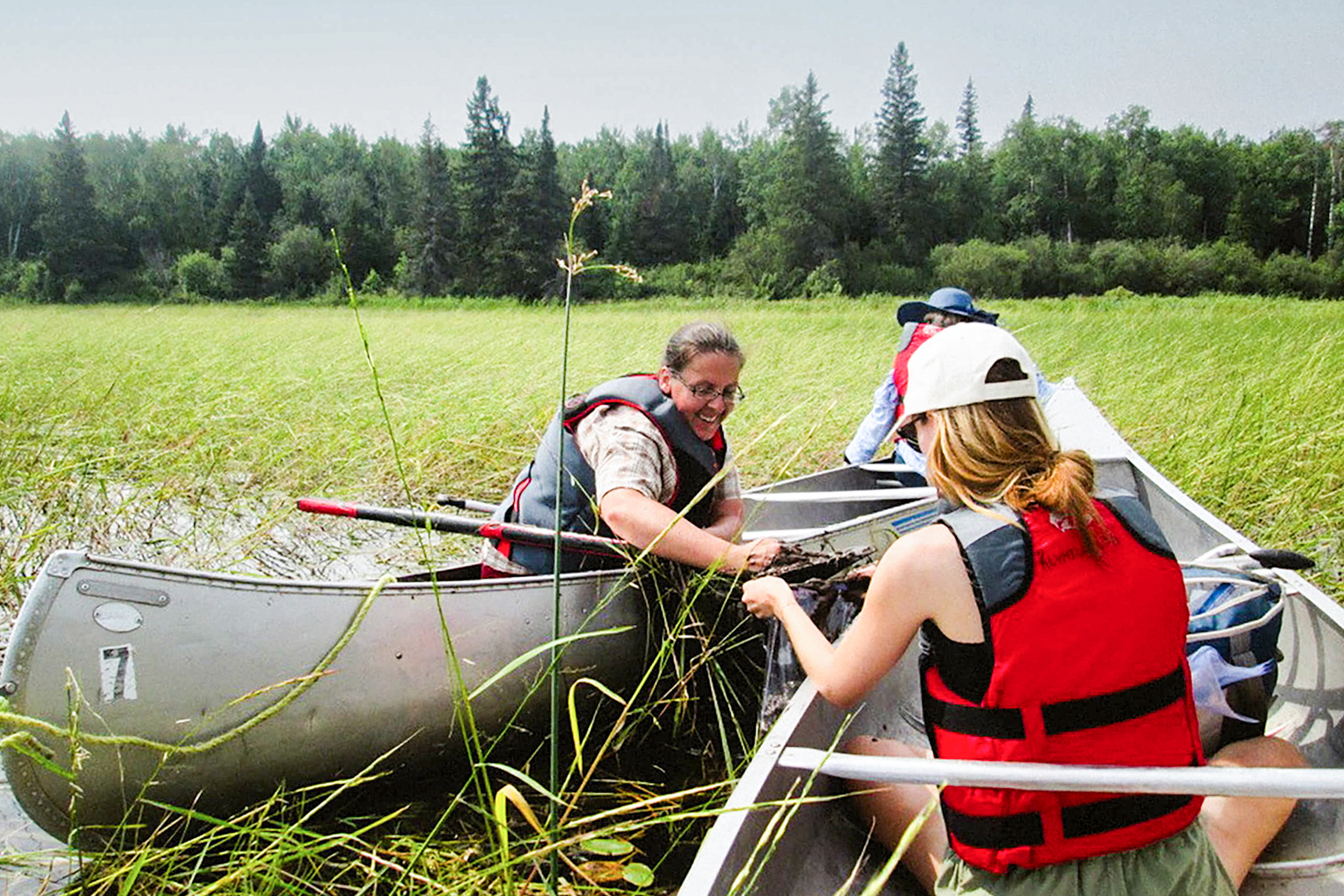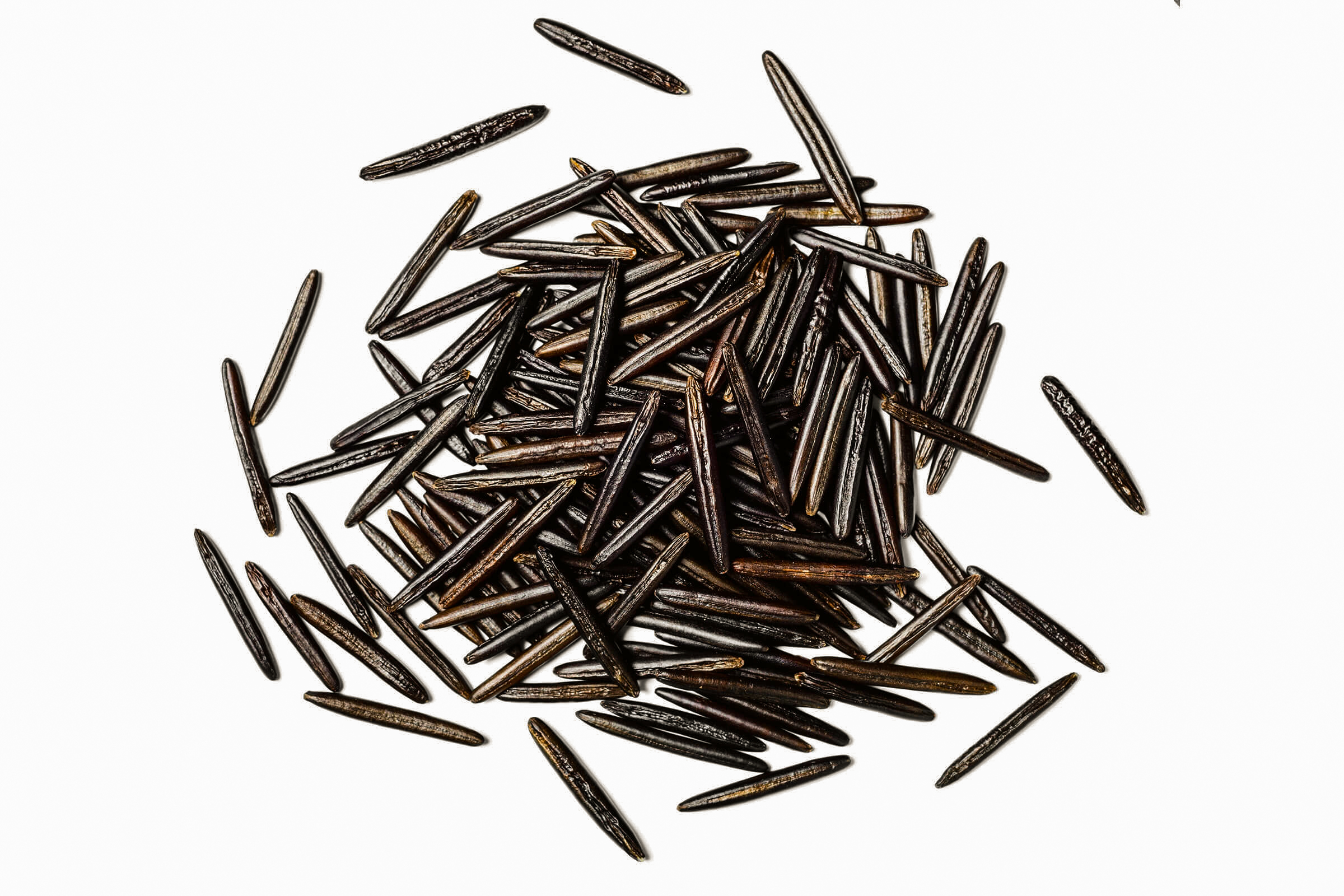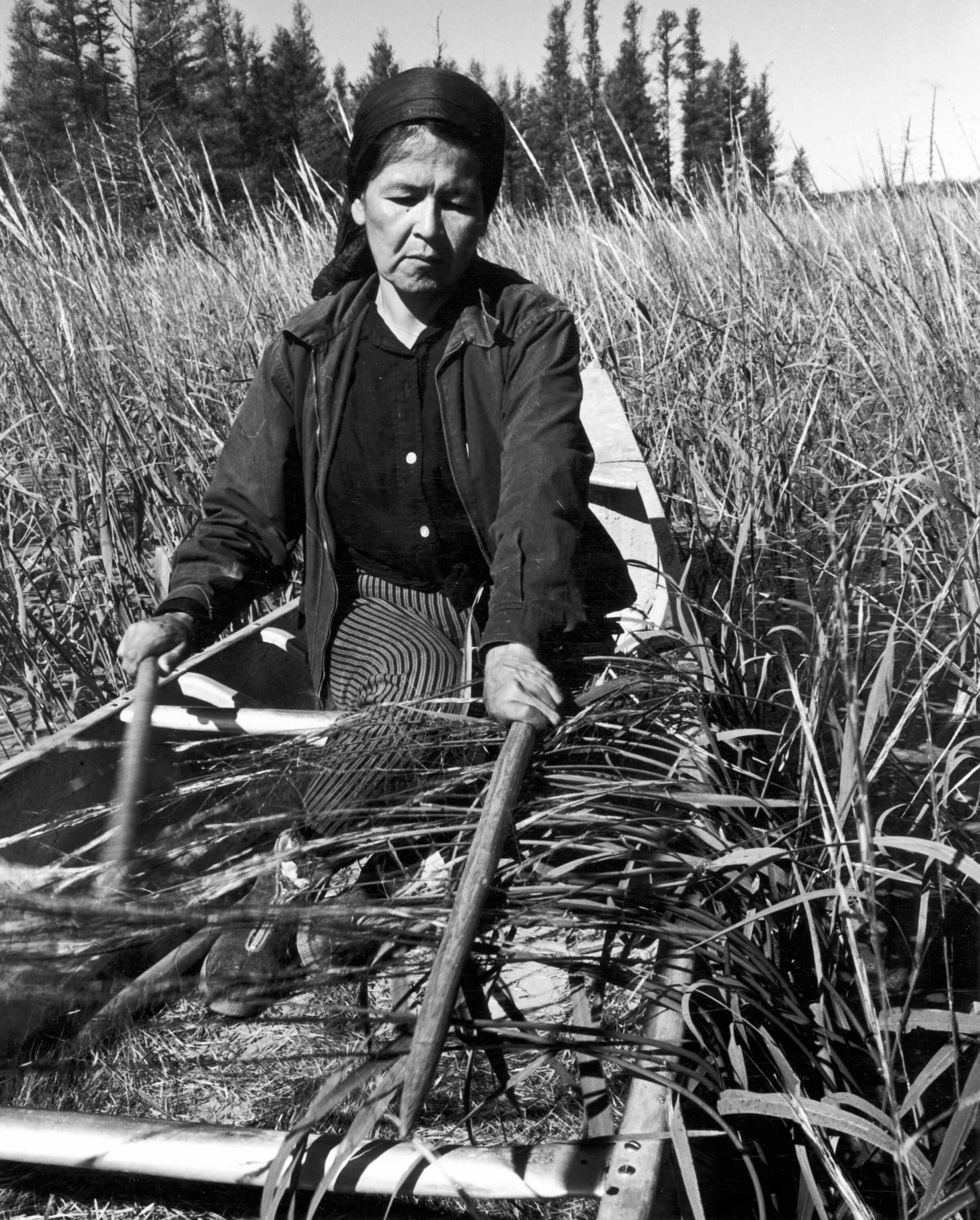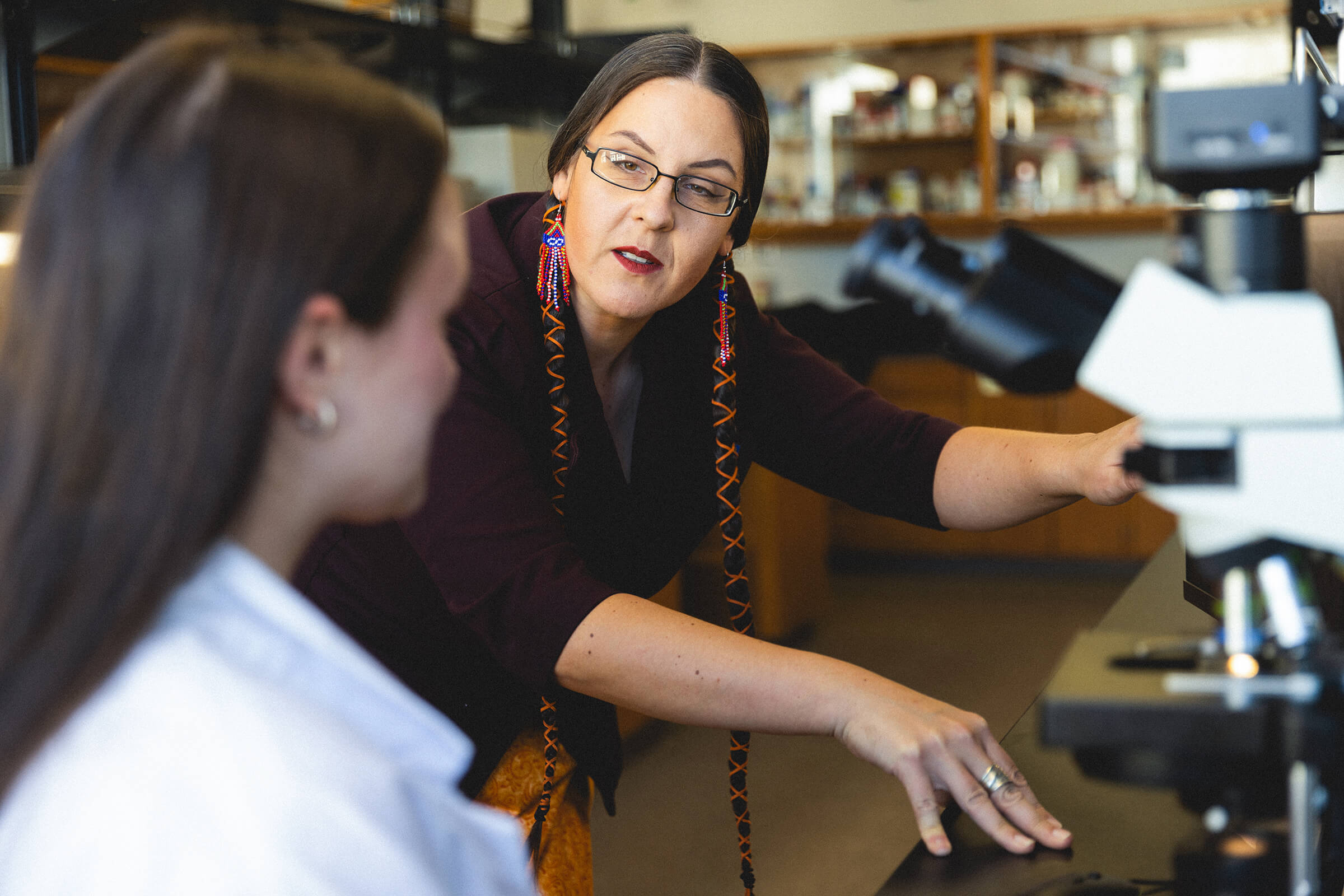University of Manitoba researchers are casting a timely spotlight on a plant that’s been growing in Canada for millennia. Wild rice is the only grain native to our country, yet the elusive commodity is barely known or produced here.
That could change in dramatic fashion now that UM scientists are among a team spanning six continents and 10-plus countries, all looking to revitalize Indigenous crops—including wild rice, or manoomin, as it’s known in Anishinaabe culture.
Partnering with communities, they’re trying to not only preserve culturally significant foods and advance economic reconciliation but boost local food security in the decades to come, says Az Klymiuk, an Indigenous scholar in UM’s Faculty of Science.
“As our population increases and we need to feed more people on planet Earth, we’re going to have to look at optimizing the production of different types of plants,” says Klymiuk. “It’s one of those things we have to do as the amount of available land decreases and our population increases. The math is pretty straightforward.”

Although wild rice is still harvested by some Indigenous people in Canada and even sold commercially, it is a dying practise, says researcher Az Klymiuk, seen here collecting wild rice with students on South Cross Lake.
Scientists also feel the urgency to facilitate more climate-friendly ways of growing this wild rice.
It’s a tall order that’s got many in Manitoba and neighbouring provinces honing in on these one-inch kernels. This nutty-flavoured rice has a lot going for it: it’s loaded with antioxidants, has a low glycemic index and is high in protein (more than double that of white rice).
“Wild rice evolved here and it has been used by Indigenous peoples across the Great Lakes region and the Plains for thousands of years,” says Klymiuk. “There’s evidence that people were harvesting wild rice at the same time as they were hunting mammoths. In fact, wild rice has been found in the gut contents of mammoths.”
“It has a long history in this land, and it would be wonderful to revitalize it and to bring it back into our diets in a really meaningful way.”

The delicate science to becoming more climate-friendly
Traditionally, in the wild in Canada, this rice is harvested by hand from its tall grasses, which grow in the shallow, hip-wader-depths of small lakes or streams, before being collected by canoe. Last summer Klymiuk, who is Cree-Métis, taught students about the cultural sweeping of these grasses using a wooden stick, knocking the rice loose and into the bottom of the boat.

An Ojibwa woman, Francis Mike, harvesting wild rice in a boat on Totogatic Lake, circa pre-1960 // Photo courtesy of the Wisconsin Historical Society
The problem, however, is large-scale farming of manoomin involves flooding land and these rice paddy fields release loads of methane into the atmosphere—significantly more than conventional agriculture. In fact, rice production—on a global scale—is a massive polluter, with estimated emissions on par with the aviation industry. To date, most wild rice sold in Canada is imported.
“Much of the wild rice that you see on store shelves today is paddy produced rice from the U.S.,” says Klymiuk.
A better way to farm manoomin is to use minimally saturated land—soil that’s just wet and squishy. In Manitoba, wild rice could be an excellent choice to grow in regions typically too soggy for other crops, Klymiuk insists.
“We want to reduce the amount of methane that’s being produced. We want to create economic opportunities for the Indigenous communities that engage with this process. Creating broad acreage wild rice crops in ways that minimize emissions, while ensuring a consistent supply, would be a win-win.”

Photo by Dan Gwozdz
Want to dive deeper into the science?
Farming wild rice in waist-height water produces greater earth-damaging methane partly because the plant’s long and hollow blades of grass act like pipes, or conduits, for emissions to escape into the atmosphere without being broken down.
On land that’s moist, versus flooded, the grasses push the oxygen down into the roots to oxygenate the soil, so it produces lower methane. But this creates another biological problem involving a lack of phosphorous—required by all plants to flourish. Az Klymiuk is trying to overcome this roadblock by exploring what species of fungi could fix the imbalance.
Klymiuk sees the vast possibilities that could come with a meaningful return of wild rice to Canadian dinner tables—it’s a commodity that can be sustainably grown, culturally respected and ready to nourish the next generation. Manoomin, by its very nature, has a knack for longevity (with its surprising 20 to 30-year shelf life.)
“I made some wild rice soup last weekend with rice that I had from more than a decade ago,” says the biologist. “It was delicious.”
Market demand is something UM PhD student Ravinder Singh is helping to boost by exploring new food products made with wild rice, including a plant-protein-based, meat alternative. He’s already perfected a healthier puffed snack, with a similar crunch to the iconic Cheeto.

This plant-protein-based, meat alternative made with wild rice is still in its early stages, says Ravinder Singh, a researcher in Filiz Koksel’s lab in the Department of Food and Human Nutritional Sciences.
“We want to get the optimized formulation: where we are getting a high-quality final product using the maximum amount of Indigenous wild rice,” he explains.
Wild rice contains phenolic compounds that can help prevent diabetes and cardiovascular disease. This functional food would offer consumers and Indigenous communities healthy, protein-rich options, says Singh, who is working with Indigenous-owned business Myera Group Inc.
“I really want to see this product in the supermarkets.”
FINAL TAKEAWAY // How wild rice is a cog in a bigger wheel
The push for more sustainable food systems in agriculture often pulls inspiration from a model originating in the 1970s: the circular economy, where waste from one industry is repurposed for another.
In this case, it’s not just agriculture but aquaculture (the inland farming of fish). And wild rice is part of this innovative circuit.
Klymiuk and fellow UM scientists are working with innovation from Manitoba-based business Myera Group Inc.
In St. Francois Xavier, Man., they’ve created an inland fish farm of Arctic char, with tanks mimicking the salt-water conditions of traditional strains found in Nunavut. They’re supporting conservation by taking pressure off wild populations struggling to adapt to climate shifts and then using the excrement from these fish as fertilizer to grow traditional medicines, like algae, in addition to manoomin, says Myera CEO Bruce Hardy.
The fish waste from their aquaculture system feeds the wild rice plants via underground pipes during summer. In winter, the waste helps grow the algae, now being studied as a therapy to prevent vision loss. So far, six Indigenous communities are involved from Manitoba, Saskatchewan, Alberta and Ontario.
Hardy, who is Cree-Métis, explains: “We call it Indigenous design research. So, how can you take innovation to grow something without losing both the culture and that conservation aspect?”
Where most people see problems, Bisons see solutions. Explore and meet UM researchers—like Az Klymiuk—who are changing lives in Manitoba and beyond.
Az Klymiuk is an Assistant Professor and Indigenous Scholar in Science and Biological Sciences at the University of Manitoba.








Hi there,
I would like to plant some wild rice on my 80 acre farm near Wpg Beach, MB. I have several, small wetlands screaming for wild rice.